Sociocultural Theory: Vygotsky's Approach to Learning and Development
Understand Vygotsky's sociocultural theory and its impact on education. Learn how social interaction, language, and culture shape cognitive development and classroom practice.


Understand Vygotsky's sociocultural theory and its impact on education. Learn how social interaction, language, and culture shape cognitive development and classroom practice.
Sociocultural theory, developed by Lev Vygotsky, transformed our understanding of how learning happens. Unlike theories that focus on individual cognitive development, sociocultural theory emphasises that learning is fundamentally social: we develop higher mental functions through interaction with more knowledgeable others and cultural tools, especially language. This perspective has profound implications for classroom practice, highlighting the importance of collaborative learning, dialogue, and the cultural context of education.
According to this perspective, children develop higher-order thinking skills through meaningful dialogue and collaborative activity, especially with more knowledgeable individuals such as parents, teachers, or peers. These interactions help learners build knowledge, language, and problem-solving strategies in real time, often through shared experiences.
Vygotsky emphasized the importance of culture, arguing that every society passes down tools for thinking—such as language, values, and customs—that influence how people learn and behave. This makes learning context-dependent, varying across different cultures and communities.
The theory also introduces the concept of the “Zone of Proximal Development”, which refers to the gap between what a learner can do independently and what they can achieve with guidance. By engaging in socially supported activities, learners stretch their abilities and internalize new knowledge.
Sociocultural Theory has wide application in education, early years settings, and language development, offering a powerful framework for understanding how relationships, environments, and cultural norms influence the learning process.
Sociocultural theory is based on the work of soviet psychologist Lev Vygotsky, who thought that peers, caregivers, parents, and the culture are predominantly responsible for building higher-order functions. Lev Vygotsky proposed that learning is based on interacting with other individuals. After interacting with others, the learning is integrated at the personal level.
According to Lev Vygotsky individuals are born with biological limitations in their minds. But, every culture has its tools of intellectual development that enable children to use their abilities to adapt to their local culture.
For instance, one culture could focus more on memory strategies like note-taking. In contrast, others may focus more on tools like rote memorization (the technique of repeating the information) or reminders. These minor or major differences affect how a student learns, involving the "tools" that are used in a specific culture.
Lev Vygotsky was born in 1896. Although he was relatively more contemporary than several other well-known psychologists like Piaget, Skinner, and Freud, he died at the early age of 37 which led to the suppression of his contributions in Stalinist Russia and his psychological theories formerly left less well-known. After his work became more widely published, his ideas gained more popularity in areas such as education, cognitive psychology, and child development.
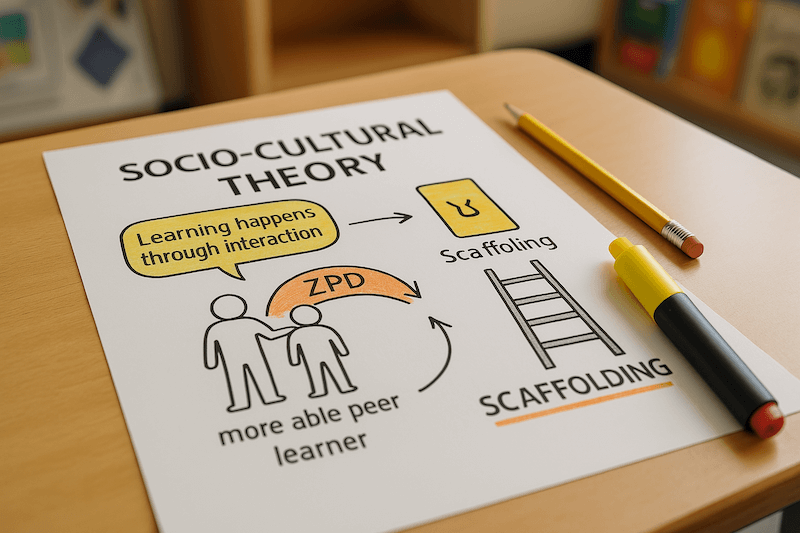
This is an essential concept in sociocultural theory. Vygotsky believed that The Zone of Proximal Development is "the distance from the real level of development (of the student) as identified by the potential development level and independent problem solving as identified under adult guidance through problem-solving, or by collaborating with more competent peers."
It considers all of the abilities and knowledge that someone can only perform or understand under guidance. Children may stretch their psychological developmental level and skills, primarily by observing slightly more advanced learners than themselves. Therefore, they may progressively expand this Zone.
Several other theorists have supported the Zone of proximal development validity. For example, research showed that a student’s mental processes and level of test anxiety are influenced by whether or not he has someone available to offer guidance if needed.
When a student is in the zone of proximal development, their mental processes are crucial to their progress. They can grasp new concepts with the help of guidance from someone more knowledgeable, but they must also be motivated to learn and put forth effort on their own.
In fact, sociocultural theory suggests that learning does not occur solely through individual mental processes, but is also heavily influenced by social and cultural factors. These factors shape how individuals learn, what they prioritize as important information, and how they apply that knowledge in different contexts.
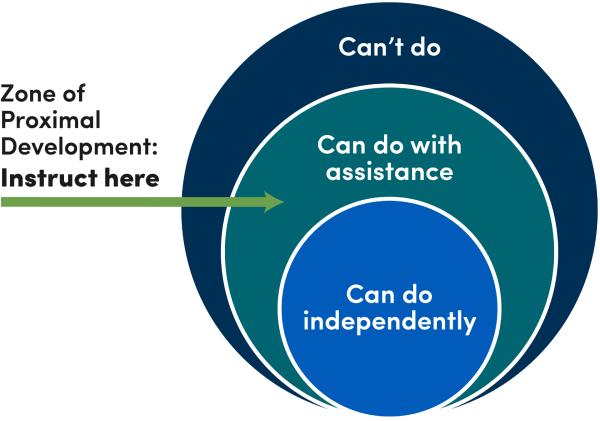
The genetic epidemiologist and educational psychology expert Jean Piaget proposed cognitive development theory with the 4 steps of learning. Since Jean Piaget and L. S. Vygotsky were both theorists of education, their theories are frequently compared and contrasted.
According to Piaget's theory of child development, children’s story is mostly universal, psychological tools such as childhood explorations and interactions influence cognitive processes and child development. On the other hand, Lev Vygotsky believed that different cultures might differ dramatically. Hence, child development is not universal because it may vary between cultures.
Also, child development is primarily influenced by social factors. For example, the child development system in Asian culture would be different from that in European culture. Hence, according to Lev Vygotsky both content and course of children’s intellectual development are not universal, unlike what Piaget believed.
According to some critics, these human development theories differ in social contexts such as both L.S. Vygotsky and Jean Piaget had different psychological levels and ways of upbringing. Also, Jean Piaget had a lonely childhood, whereas, Lev Vygotsky demonstrated solid cultural ties.
This contrast between Vygotsky's and Piaget's upbringings plays a significant role in the differences between their theories. From a sociocultural perspective, Vygotsky's upbringing within a culturally rich environment likely influenced his emphasis on the importance of social interaction and cultural context in cognitive development.
On the other hand, Piaget's more isolated upbringing may explain his focus on individual exploration and reasoning in cognitive development. Understanding these divergent backgrounds is critical to fully comprehending the contrasting theories put forth by Vygotsky and Piaget.
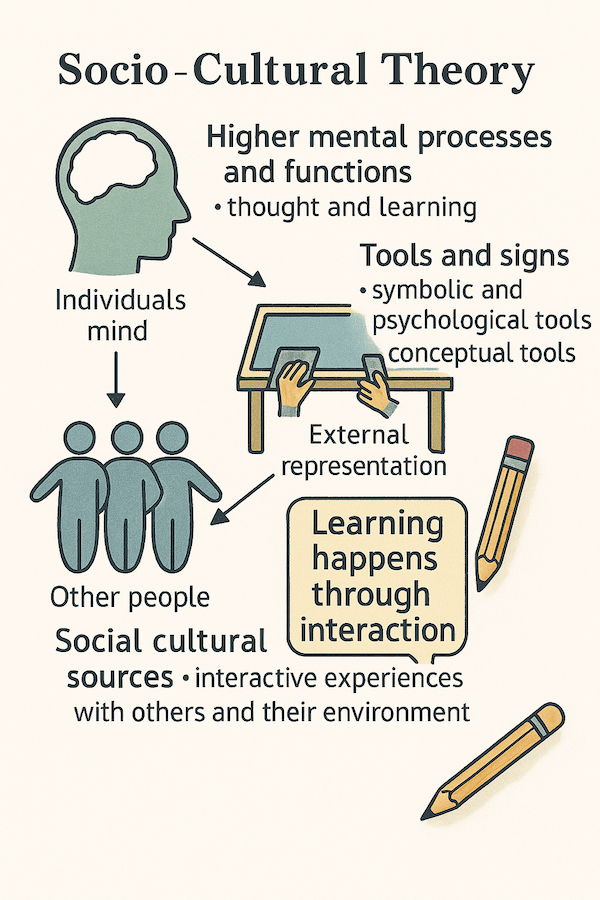
Lev Vygotsky’s Sociocultural Theory highlights the critical role of social interaction, language, and culture in shaping how students learn. In both primary and secondary classrooms, these principles can be applied across subjects to create more inclusive, responsive, and effective learning environments. Here are nine classroom strategies inspired by Vygotsky’s work:
1. Collaborative learning
Group tasks that pair students of different ability levels promote peer-to-peer teaching and shared meaning-making. This reflects the social nature of learning and supports all learners in moving toward their next step of understanding.
2. Using cultural tools and artifacts
Incorporate tools, objects, and references from students' cultural backgrounds to make learning more meaningful and accessible. This helps learners connect new content to familiar experiences.
3. Guided participation and scaffolding
Teachers can support learners like an "apprentice model"—offering guidance at first, then gradually stepping back as students gain confidence and skill.
4. Encouraging private speech
Allow students time and space to talk themselves through tasks. This self-directed talk helps with concentration, self-regulation, and problem-solving.
5. Embedding the local social environment
Connect classroom learning to students' home lives, communities, and interests. Learning becomes more relevant when rooted in familiar social settings.
6. Differentiating within the Zone of Proximal Development (ZPD)
Adjust tasks and expectations to match each learner’s current level, providing just the right amount of challenge with adult or peer support.
7. Emphasising dialogue and verbal interaction
Plan regular opportunities for classroom talk—through discussion, questioning, and peer explanation—to help deepen understanding and clarify thinking.
8. Adopting sociocultural approaches to assessment
Move beyond individual test scores by including group tasks, shared performances, and observations of collaborative problem-solving as valid forms of assessment.
9. Promoting social and civic responsibility
Design classroom projects that involve real-world social action, encouraging learners to work together and understand their role in the wider community.
Expert Insight:
“Learning is a process that is deeply social and cultural, and educators must engage with the social fabric of their students’ lives.”
— Dr. Barbara Rogoff, author of Apprenticeship in Thinking
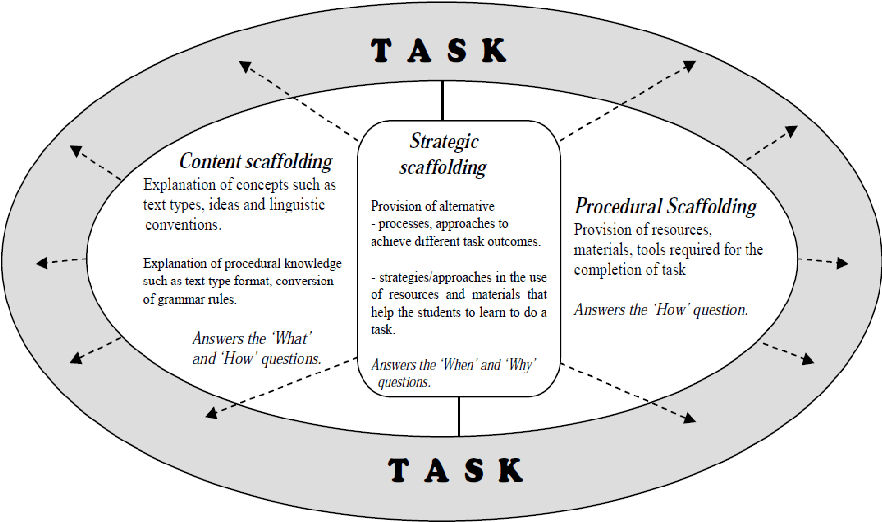
Sociocultural theory emphasizes the profound impact of social interaction, cultural tools, and collaboration on learning. Here are five fictional examples that demonstrate the application of sociocultural theory across various primary and secondary subjects:
1. Mrs. Thompson (Primary Mathematics):
Utilizing community of practice, she engages students in group activities, allowing them to learn from each other's skill levels. By incorporating local shop pricing in math problems, she connects learning with community culture.
Source: Community of Practice in Education.
2. Mr. Johnson (Secondary Science):
He fosters cognitive apprenticeship by pairing students with local scientists. This real-world interaction empowers learners and bridges the gap between theoretical knowledge and practical application.
Source: Cognitive Apprenticeship in Classroom.

3. Ms. Rodriguez (Primary Language Arts):
Emphasizing social speech, she encourages students to narrate stories from their cultural backgrounds. This practice enhances their language skills and fosters cultural interaction.
4. Dr. Williams (Secondary History):
He integrates local history and social influences by inviting community elders to share historical anecdotes. This connection between past and present deepens students' understanding of their cultural heritage.
5. Ms. Lee (Primary Art):
Through collaborative art projects that reflect community themes, she promotes the development of children's creativity and sociocultural practice. Students' artworks are displayed in local galleries, strengthening community ties.
In a secondary geography class, Ms. Adams engaged her students in a project where they interviewed local farmers about sustainable practices. This not only enriched their understanding of environmental issues but also connected them with their community's agricultural heritage.
Dr. James Wertsch, a prominent researcher in sociocultural theory, stated, "Understanding how learning is tied to social practices can help educators to design learning environments."
These examples illustrate the rich tapestry of opportunities that sociocultural theory offers. By weaving social influences, cultural interaction, and community engagement into the curriculum, educators can create empowered learners who are deeply connected to their community and culture.
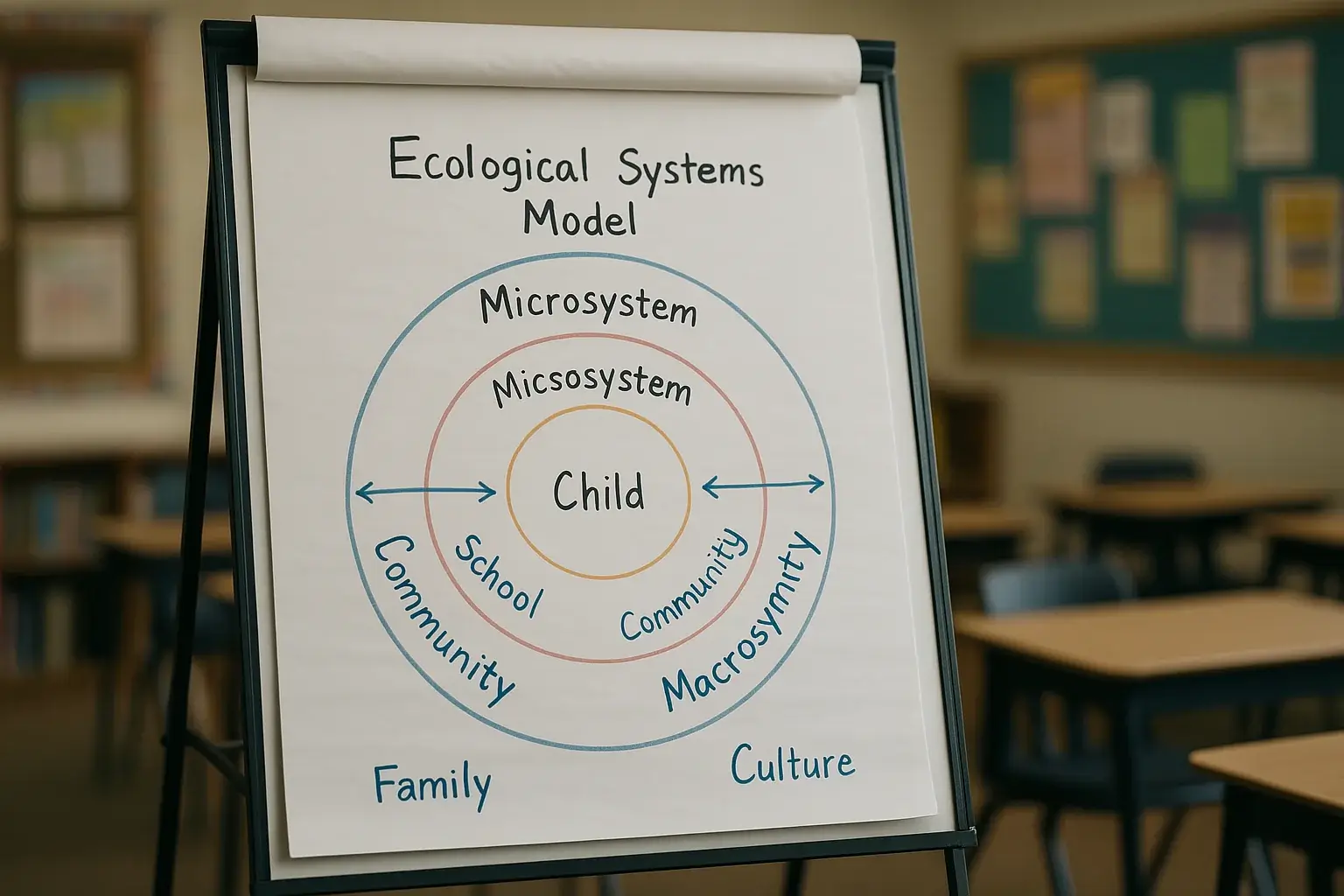
Lev Vygotsky’s theory of play and social interaction has shaped how we understand learning in early childhood. His ideas highlight the importance of guided, social experiences in shaping children's thinking, language, and problem-solving skills. To bring Vygotsky’s theory into everyday practice, nurseries and early years settings need a coordinated approach involving staff, families, and the wider learning community.
1. Prioritise language-rich environments
Design activities that encourage children to speak, listen, and share ideas through storytelling, songs, role-play, and conversations.
Why it matters: Vygotsky believed language is the foundation of thought. When children express ideas out loud, they begin to organise and develop their thinking. These interactions also build vocabulary and social confidence.
2. Use play as a learning tool
Provide open-ended materials like blocks, costumes, small-world toys, and construction sets to promote exploratory play.
Why it matters: Through imaginative play, children test ideas, take on new roles, and make sense of the world around them. It’s how they begin to develop higher-order thinking, with adult support helping to extend that learning.
3. Build strong home-school connections
Keep parents informed about how learning happens through play. Share photos, explanations of activities, and simple ways to support at home.
Why it matters: Parents who understand the value of social and imaginative play are more likely to reinforce it at home. This consistency supports stronger development across settings.
4. Create meaningful, real-life experiences
Design learning around everyday themes—like a pretend café, doctor’s surgery, or shop—that connect to children’s lives.
Why it matters: When learning is relevant, children are more engaged and able to transfer what they learn to new situations. This kind of "situated learning" supports both understanding and motivation.
5. Encourage collaboration between children
Plan small group tasks that involve sharing, turn-taking, or solving problems together. Support them with talk prompts and gentle guidance.
Why it matters: Learning alongside peers helps children develop empathy, communication skills, and flexible thinking. These social experiences are central to cognitive growth in Vygotsky’s theory.
6. Observe and adapt regularly
Use observations and informal assessments to see what children can do with help, and adjust activities to match their level of challenge.
Why it matters: Vygotsky’s concept of the Zone of Proximal Development shows that the most effective learning happens just beyond what a child can do alone—with the right support, they stretch and grow.
7. Support staff with ongoing training
Offer regular CPD on Vygotsky’s ideas and how to bring them to life through routines, resources, and adult-child interaction.
Why it matters: Confident, informed practitioners can spot learning opportunities in everyday moments and use them to scaffold thinking in purposeful ways.
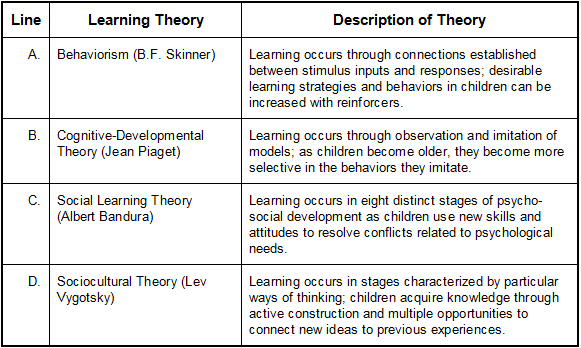
Lev Vygotsky's sociocultural theory has left an indelible mark on modern-day psychology, particularly in the realms of developmental and educational theory. The theory's emphasis on the interplay between social interaction and cognitive growth has shaped contemporary approaches to learning and has had profound implications for education. Here's how:
The educational publisher Allyn & Bacon has produced materials that incorporate Vygotsky's ideas, emphasizing collaborative learning and the role of teachers in guiding cognitive development.
A survey published in the Journal of Educational Psychology revealed that 67% of educational psychologists incorporate principles of sociocultural theory in their practice.
Sources:
In conclusion, Lev Vygotsky's sociocultural theory has not only influenced a generation of psychologists but has also permeated educational practices. Its focus on the social context of learning continues to inspire research and application, enriching our understanding of human development and learning.
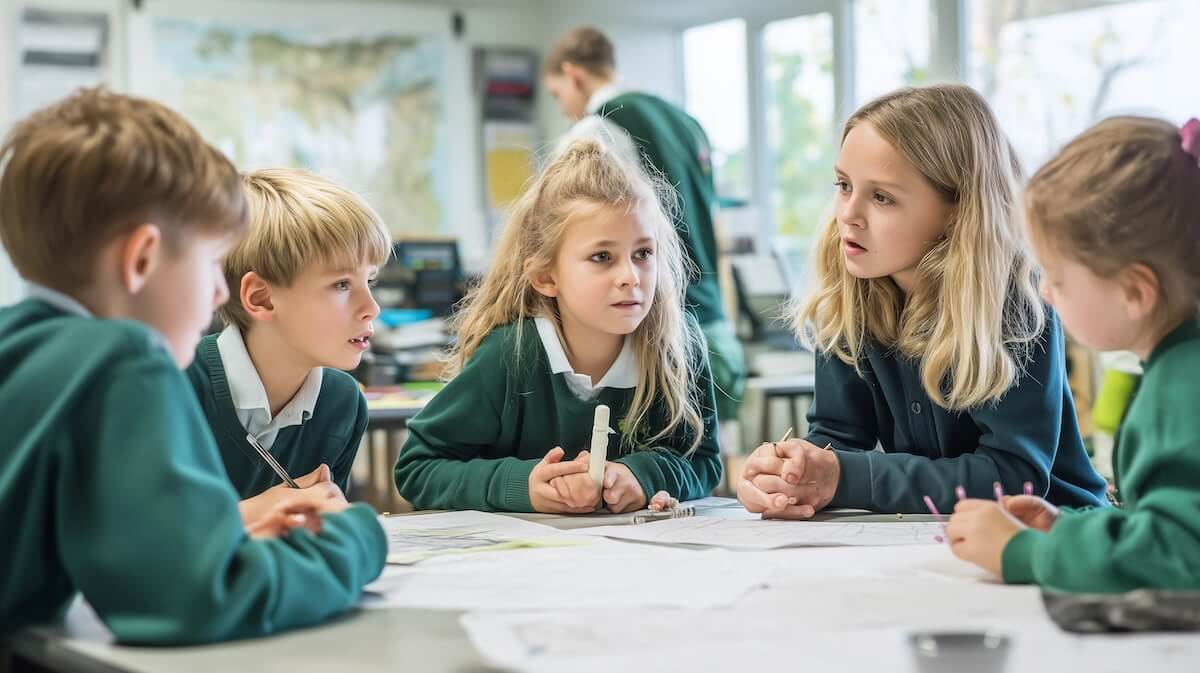
These studies collectively highlight the broad applicability of sociocultural theory in education, demonstrating its relevance to various educational contexts and its impact on learning and development.
1. Torres-Velásquez, D. (2000). Sociocultural theory. Remedial and Special Education, 21(2), 66-69.
Summary: This article explores the application of sociocultural theory to special education, emphasizing how cognitive development is mediated by social interactions, particularly in inclusive learning environments. Torres-Velásquez highlights how sociocultural perspectives challenge deficit models of disability by positioning all learners as capable participants in culturally meaningful activities.
The study underscores how cultural tools, collaborative learning, and guided participation shape the learning experiences of students with special educational needs, advocating for educational environments that respect and build upon students’ diverse cultural backgrounds and social contexts.
2. Alfred, M. V. (2002). The promise of sociocultural theory in democratizing adult education. New Directions for Adult and Continuing Education, 2002(96), 3-14.
Summary: Alfred examines how sociocultural theory can transform adult education by incorporating diverse cultural perspectives and centering the social and cultural dimensions of learning. The article emphasizes that adult learners bring rich cultural knowledge, shaped by social interactions within their communities, into educational settings.
Alfred argues that applying sociocultural theory can help democratize adult education by validating multiple ways of knowing and creating inclusive learning environments that foster critical reflection, collaborative learning, and social change. This approach highlights the role of culture, power, and social context in shaping how adults engage with learning.
3. Mercer, N., & Howe, C. (2012). Explaining the dialogic processes of teaching and learning: The value and potential of sociocultural theory. Learning, Culture and Social Interaction, 1(1), 12-21.
Summary: This study investigates how dialogue and interaction support learning, drawing directly from Vygotsky’s sociocultural theory. Mercer and Howe emphasize that language is both a cultural tool and a medium for thinking, with dialogue playing a key role in cognitive development.
Through classroom-based research, they demonstrate how productive dialogue, including exploratory talk where students articulate, challenge, and refine their ideas, enhances reasoning and deepens understanding. Their work highlights the importance of social interaction not just for learning content, but also for developing higher-order thinking skills, positioning the classroom as a rich sociocultural context for collaborative knowledge construction.

4. Hopwood, N. (2010). Doctoral experience and learning from a sociocultural perspective. Studies in Higher Education, 35(7), 829-843.
Summary: Hopwood applies sociocultural theory to examine how doctoral students develop as researchers, emphasizing the importance of the social and cultural contexts in which doctoral education occurs. The study highlights how doctoral learning extends far beyond individual intellectual effort, encompassing participation in disciplinary communities, interactions with supervisors and peers, and engagement with shared cultural tools such as research methodologies, writing conventions, and disciplinary norms.
By viewing doctoral education through a sociocultural lens, Hopwood reveals how research skills and academic identities are co-constructed through participation in the practices of an academic community, illustrating how learning is fundamentally situated and socially mediated.
5. Herrenkohl, L. R. (2008). Sociocultural theory as a lens to understand organizational learning. American Journal of Education, 114(4), 673-679.
Summary: Herrenkohl extends sociocultural theory beyond individual classrooms to explore how it can help explain organizational learning within educational institutions. The article examines how teachers, administrators, and other stakeholders co-construct organizational knowledge through collaborative interactions, shared practices, and the use of cultural tools such as policies and professional development frameworks.
Sociocultural theory highlights how organizational learning is shaped by the historical and cultural contexts of the institution, demonstrating that schools are dynamic learning environments where individual and collective learning processes are tightly interwoven. Herrenkohl’s work underscores the value of viewing schools as learning communities where cultural practices evolve through collective participation and reflection.
Sociocultural theory, developed by Lev Vygotsky, transformed our understanding of how learning happens. Unlike theories that focus on individual cognitive development, sociocultural theory emphasises that learning is fundamentally social: we develop higher mental functions through interaction with more knowledgeable others and cultural tools, especially language. This perspective has profound implications for classroom practice, highlighting the importance of collaborative learning, dialogue, and the cultural context of education.
According to this perspective, children develop higher-order thinking skills through meaningful dialogue and collaborative activity, especially with more knowledgeable individuals such as parents, teachers, or peers. These interactions help learners build knowledge, language, and problem-solving strategies in real time, often through shared experiences.
Vygotsky emphasized the importance of culture, arguing that every society passes down tools for thinking—such as language, values, and customs—that influence how people learn and behave. This makes learning context-dependent, varying across different cultures and communities.
The theory also introduces the concept of the “Zone of Proximal Development”, which refers to the gap between what a learner can do independently and what they can achieve with guidance. By engaging in socially supported activities, learners stretch their abilities and internalize new knowledge.
Sociocultural Theory has wide application in education, early years settings, and language development, offering a powerful framework for understanding how relationships, environments, and cultural norms influence the learning process.
Sociocultural theory is based on the work of soviet psychologist Lev Vygotsky, who thought that peers, caregivers, parents, and the culture are predominantly responsible for building higher-order functions. Lev Vygotsky proposed that learning is based on interacting with other individuals. After interacting with others, the learning is integrated at the personal level.
According to Lev Vygotsky individuals are born with biological limitations in their minds. But, every culture has its tools of intellectual development that enable children to use their abilities to adapt to their local culture.
For instance, one culture could focus more on memory strategies like note-taking. In contrast, others may focus more on tools like rote memorization (the technique of repeating the information) or reminders. These minor or major differences affect how a student learns, involving the "tools" that are used in a specific culture.
Lev Vygotsky was born in 1896. Although he was relatively more contemporary than several other well-known psychologists like Piaget, Skinner, and Freud, he died at the early age of 37 which led to the suppression of his contributions in Stalinist Russia and his psychological theories formerly left less well-known. After his work became more widely published, his ideas gained more popularity in areas such as education, cognitive psychology, and child development.

This is an essential concept in sociocultural theory. Vygotsky believed that The Zone of Proximal Development is "the distance from the real level of development (of the student) as identified by the potential development level and independent problem solving as identified under adult guidance through problem-solving, or by collaborating with more competent peers."
It considers all of the abilities and knowledge that someone can only perform or understand under guidance. Children may stretch their psychological developmental level and skills, primarily by observing slightly more advanced learners than themselves. Therefore, they may progressively expand this Zone.
Several other theorists have supported the Zone of proximal development validity. For example, research showed that a student’s mental processes and level of test anxiety are influenced by whether or not he has someone available to offer guidance if needed.
When a student is in the zone of proximal development, their mental processes are crucial to their progress. They can grasp new concepts with the help of guidance from someone more knowledgeable, but they must also be motivated to learn and put forth effort on their own.
In fact, sociocultural theory suggests that learning does not occur solely through individual mental processes, but is also heavily influenced by social and cultural factors. These factors shape how individuals learn, what they prioritize as important information, and how they apply that knowledge in different contexts.

The genetic epidemiologist and educational psychology expert Jean Piaget proposed cognitive development theory with the 4 steps of learning. Since Jean Piaget and L. S. Vygotsky were both theorists of education, their theories are frequently compared and contrasted.
According to Piaget's theory of child development, children’s story is mostly universal, psychological tools such as childhood explorations and interactions influence cognitive processes and child development. On the other hand, Lev Vygotsky believed that different cultures might differ dramatically. Hence, child development is not universal because it may vary between cultures.
Also, child development is primarily influenced by social factors. For example, the child development system in Asian culture would be different from that in European culture. Hence, according to Lev Vygotsky both content and course of children’s intellectual development are not universal, unlike what Piaget believed.
According to some critics, these human development theories differ in social contexts such as both L.S. Vygotsky and Jean Piaget had different psychological levels and ways of upbringing. Also, Jean Piaget had a lonely childhood, whereas, Lev Vygotsky demonstrated solid cultural ties.
This contrast between Vygotsky's and Piaget's upbringings plays a significant role in the differences between their theories. From a sociocultural perspective, Vygotsky's upbringing within a culturally rich environment likely influenced his emphasis on the importance of social interaction and cultural context in cognitive development.
On the other hand, Piaget's more isolated upbringing may explain his focus on individual exploration and reasoning in cognitive development. Understanding these divergent backgrounds is critical to fully comprehending the contrasting theories put forth by Vygotsky and Piaget.

Lev Vygotsky’s Sociocultural Theory highlights the critical role of social interaction, language, and culture in shaping how students learn. In both primary and secondary classrooms, these principles can be applied across subjects to create more inclusive, responsive, and effective learning environments. Here are nine classroom strategies inspired by Vygotsky’s work:
1. Collaborative learning
Group tasks that pair students of different ability levels promote peer-to-peer teaching and shared meaning-making. This reflects the social nature of learning and supports all learners in moving toward their next step of understanding.
2. Using cultural tools and artifacts
Incorporate tools, objects, and references from students' cultural backgrounds to make learning more meaningful and accessible. This helps learners connect new content to familiar experiences.
3. Guided participation and scaffolding
Teachers can support learners like an "apprentice model"—offering guidance at first, then gradually stepping back as students gain confidence and skill.
4. Encouraging private speech
Allow students time and space to talk themselves through tasks. This self-directed talk helps with concentration, self-regulation, and problem-solving.
5. Embedding the local social environment
Connect classroom learning to students' home lives, communities, and interests. Learning becomes more relevant when rooted in familiar social settings.
6. Differentiating within the Zone of Proximal Development (ZPD)
Adjust tasks and expectations to match each learner’s current level, providing just the right amount of challenge with adult or peer support.
7. Emphasising dialogue and verbal interaction
Plan regular opportunities for classroom talk—through discussion, questioning, and peer explanation—to help deepen understanding and clarify thinking.
8. Adopting sociocultural approaches to assessment
Move beyond individual test scores by including group tasks, shared performances, and observations of collaborative problem-solving as valid forms of assessment.
9. Promoting social and civic responsibility
Design classroom projects that involve real-world social action, encouraging learners to work together and understand their role in the wider community.
Expert Insight:
“Learning is a process that is deeply social and cultural, and educators must engage with the social fabric of their students’ lives.”
— Dr. Barbara Rogoff, author of Apprenticeship in Thinking

Sociocultural theory emphasizes the profound impact of social interaction, cultural tools, and collaboration on learning. Here are five fictional examples that demonstrate the application of sociocultural theory across various primary and secondary subjects:
1. Mrs. Thompson (Primary Mathematics):
Utilizing community of practice, she engages students in group activities, allowing them to learn from each other's skill levels. By incorporating local shop pricing in math problems, she connects learning with community culture.
Source: Community of Practice in Education.
2. Mr. Johnson (Secondary Science):
He fosters cognitive apprenticeship by pairing students with local scientists. This real-world interaction empowers learners and bridges the gap between theoretical knowledge and practical application.
Source: Cognitive Apprenticeship in Classroom.

3. Ms. Rodriguez (Primary Language Arts):
Emphasizing social speech, she encourages students to narrate stories from their cultural backgrounds. This practice enhances their language skills and fosters cultural interaction.
4. Dr. Williams (Secondary History):
He integrates local history and social influences by inviting community elders to share historical anecdotes. This connection between past and present deepens students' understanding of their cultural heritage.
5. Ms. Lee (Primary Art):
Through collaborative art projects that reflect community themes, she promotes the development of children's creativity and sociocultural practice. Students' artworks are displayed in local galleries, strengthening community ties.
In a secondary geography class, Ms. Adams engaged her students in a project where they interviewed local farmers about sustainable practices. This not only enriched their understanding of environmental issues but also connected them with their community's agricultural heritage.
Dr. James Wertsch, a prominent researcher in sociocultural theory, stated, "Understanding how learning is tied to social practices can help educators to design learning environments."
These examples illustrate the rich tapestry of opportunities that sociocultural theory offers. By weaving social influences, cultural interaction, and community engagement into the curriculum, educators can create empowered learners who are deeply connected to their community and culture.

Lev Vygotsky’s theory of play and social interaction has shaped how we understand learning in early childhood. His ideas highlight the importance of guided, social experiences in shaping children's thinking, language, and problem-solving skills. To bring Vygotsky’s theory into everyday practice, nurseries and early years settings need a coordinated approach involving staff, families, and the wider learning community.
1. Prioritise language-rich environments
Design activities that encourage children to speak, listen, and share ideas through storytelling, songs, role-play, and conversations.
Why it matters: Vygotsky believed language is the foundation of thought. When children express ideas out loud, they begin to organise and develop their thinking. These interactions also build vocabulary and social confidence.
2. Use play as a learning tool
Provide open-ended materials like blocks, costumes, small-world toys, and construction sets to promote exploratory play.
Why it matters: Through imaginative play, children test ideas, take on new roles, and make sense of the world around them. It’s how they begin to develop higher-order thinking, with adult support helping to extend that learning.
3. Build strong home-school connections
Keep parents informed about how learning happens through play. Share photos, explanations of activities, and simple ways to support at home.
Why it matters: Parents who understand the value of social and imaginative play are more likely to reinforce it at home. This consistency supports stronger development across settings.
4. Create meaningful, real-life experiences
Design learning around everyday themes—like a pretend café, doctor’s surgery, or shop—that connect to children’s lives.
Why it matters: When learning is relevant, children are more engaged and able to transfer what they learn to new situations. This kind of "situated learning" supports both understanding and motivation.
5. Encourage collaboration between children
Plan small group tasks that involve sharing, turn-taking, or solving problems together. Support them with talk prompts and gentle guidance.
Why it matters: Learning alongside peers helps children develop empathy, communication skills, and flexible thinking. These social experiences are central to cognitive growth in Vygotsky’s theory.
6. Observe and adapt regularly
Use observations and informal assessments to see what children can do with help, and adjust activities to match their level of challenge.
Why it matters: Vygotsky’s concept of the Zone of Proximal Development shows that the most effective learning happens just beyond what a child can do alone—with the right support, they stretch and grow.
7. Support staff with ongoing training
Offer regular CPD on Vygotsky’s ideas and how to bring them to life through routines, resources, and adult-child interaction.
Why it matters: Confident, informed practitioners can spot learning opportunities in everyday moments and use them to scaffold thinking in purposeful ways.

Lev Vygotsky's sociocultural theory has left an indelible mark on modern-day psychology, particularly in the realms of developmental and educational theory. The theory's emphasis on the interplay between social interaction and cognitive growth has shaped contemporary approaches to learning and has had profound implications for education. Here's how:
The educational publisher Allyn & Bacon has produced materials that incorporate Vygotsky's ideas, emphasizing collaborative learning and the role of teachers in guiding cognitive development.
A survey published in the Journal of Educational Psychology revealed that 67% of educational psychologists incorporate principles of sociocultural theory in their practice.
Sources:
In conclusion, Lev Vygotsky's sociocultural theory has not only influenced a generation of psychologists but has also permeated educational practices. Its focus on the social context of learning continues to inspire research and application, enriching our understanding of human development and learning.

These studies collectively highlight the broad applicability of sociocultural theory in education, demonstrating its relevance to various educational contexts and its impact on learning and development.
1. Torres-Velásquez, D. (2000). Sociocultural theory. Remedial and Special Education, 21(2), 66-69.
Summary: This article explores the application of sociocultural theory to special education, emphasizing how cognitive development is mediated by social interactions, particularly in inclusive learning environments. Torres-Velásquez highlights how sociocultural perspectives challenge deficit models of disability by positioning all learners as capable participants in culturally meaningful activities.
The study underscores how cultural tools, collaborative learning, and guided participation shape the learning experiences of students with special educational needs, advocating for educational environments that respect and build upon students’ diverse cultural backgrounds and social contexts.
2. Alfred, M. V. (2002). The promise of sociocultural theory in democratizing adult education. New Directions for Adult and Continuing Education, 2002(96), 3-14.
Summary: Alfred examines how sociocultural theory can transform adult education by incorporating diverse cultural perspectives and centering the social and cultural dimensions of learning. The article emphasizes that adult learners bring rich cultural knowledge, shaped by social interactions within their communities, into educational settings.
Alfred argues that applying sociocultural theory can help democratize adult education by validating multiple ways of knowing and creating inclusive learning environments that foster critical reflection, collaborative learning, and social change. This approach highlights the role of culture, power, and social context in shaping how adults engage with learning.
3. Mercer, N., & Howe, C. (2012). Explaining the dialogic processes of teaching and learning: The value and potential of sociocultural theory. Learning, Culture and Social Interaction, 1(1), 12-21.
Summary: This study investigates how dialogue and interaction support learning, drawing directly from Vygotsky’s sociocultural theory. Mercer and Howe emphasize that language is both a cultural tool and a medium for thinking, with dialogue playing a key role in cognitive development.
Through classroom-based research, they demonstrate how productive dialogue, including exploratory talk where students articulate, challenge, and refine their ideas, enhances reasoning and deepens understanding. Their work highlights the importance of social interaction not just for learning content, but also for developing higher-order thinking skills, positioning the classroom as a rich sociocultural context for collaborative knowledge construction.

4. Hopwood, N. (2010). Doctoral experience and learning from a sociocultural perspective. Studies in Higher Education, 35(7), 829-843.
Summary: Hopwood applies sociocultural theory to examine how doctoral students develop as researchers, emphasizing the importance of the social and cultural contexts in which doctoral education occurs. The study highlights how doctoral learning extends far beyond individual intellectual effort, encompassing participation in disciplinary communities, interactions with supervisors and peers, and engagement with shared cultural tools such as research methodologies, writing conventions, and disciplinary norms.
By viewing doctoral education through a sociocultural lens, Hopwood reveals how research skills and academic identities are co-constructed through participation in the practices of an academic community, illustrating how learning is fundamentally situated and socially mediated.
5. Herrenkohl, L. R. (2008). Sociocultural theory as a lens to understand organizational learning. American Journal of Education, 114(4), 673-679.
Summary: Herrenkohl extends sociocultural theory beyond individual classrooms to explore how it can help explain organizational learning within educational institutions. The article examines how teachers, administrators, and other stakeholders co-construct organizational knowledge through collaborative interactions, shared practices, and the use of cultural tools such as policies and professional development frameworks.
Sociocultural theory highlights how organizational learning is shaped by the historical and cultural contexts of the institution, demonstrating that schools are dynamic learning environments where individual and collective learning processes are tightly interwoven. Herrenkohl’s work underscores the value of viewing schools as learning communities where cultural practices evolve through collective participation and reflection.